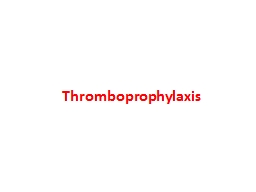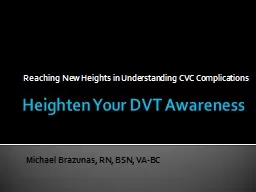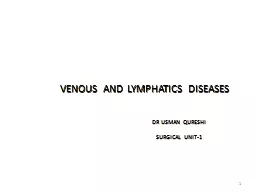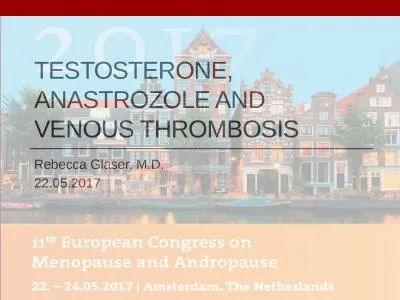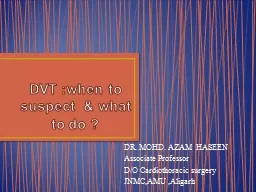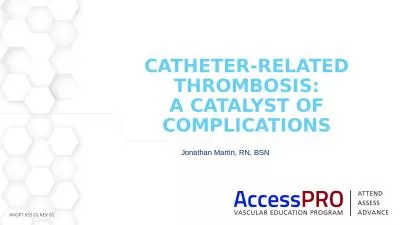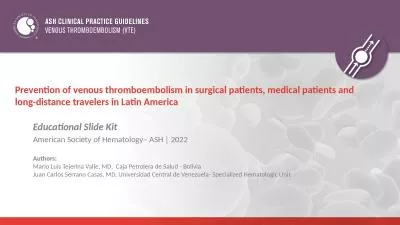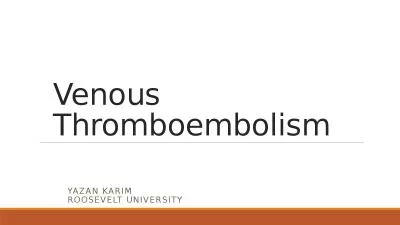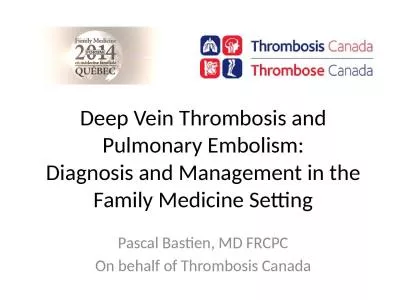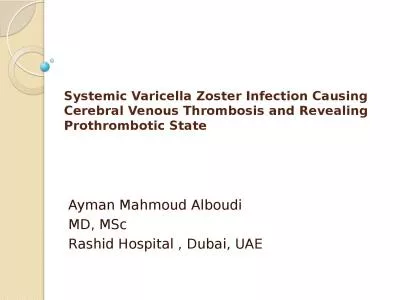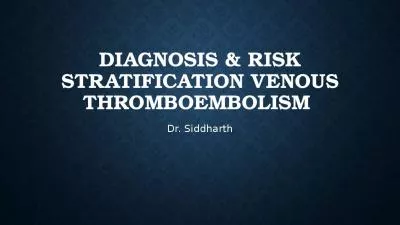PPT-Thromboprophylaxis Deep venous thrombosis (DVT) is most common in patients over 40 years
Author : roxanne | Published Date : 2024-02-16
postoperative increase in platelets coupled with venous endothelial trauma and stasis all contribute If no prophylaxis is given 30 of these patients will develop
Presentation Embed Code
Download Presentation
Download Presentation The PPT/PDF document "Thromboprophylaxis Deep venous thrombosi..." is the property of its rightful owner. Permission is granted to download and print the materials on this website for personal, non-commercial use only, and to display it on your personal computer provided you do not modify the materials and that you retain all copyright notices contained in the materials. By downloading content from our website, you accept the terms of this agreement.
Thromboprophylaxis Deep venous thrombosis (DVT) is most common in patients over 40 years: Transcript
Download Rules Of Document
"Thromboprophylaxis Deep venous thrombosis (DVT) is most common in patients over 40 years"The content belongs to its owner. You may download and print it for personal use, without modification, and keep all copyright notices. By downloading, you agree to these terms.
Related Documents

